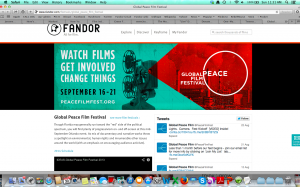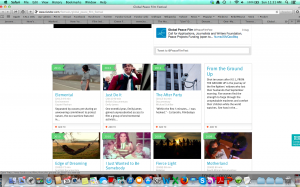 Film festivals have done an incredible job aggregating their local film loving communities. They have invested years into becoming trusted curatorial brands to that local audience. Yet festivals have many challenges — and I witnessed this first hand last year when I ran the San Francisco Film Society.
Film festivals have done an incredible job aggregating their local film loving communities. They have invested years into becoming trusted curatorial brands to that local audience. Yet festivals have many challenges — and I witnessed this first hand last year when I ran the San Francisco Film Society.
Most festivals have very limited bandwidth. They are committed to running their successful legacy programs. Even when they have experienced attendance drops or limited growth, they find it challenging to launch new programs and revenue streams for fear that their historic offerings might suffer. They can barely do all that currently do, let alone increase their capacity. Every non-profit suffers from financial limits, often operating with next to no cash reserves. How can they change with the times or expand their offerings?
Festivals depend on sponsors and donations in addition to ticket sales and grants to fund their programming. They have limited portfolios to offer sponsors and even though today’s digital revolution should be expanding their available real estate, it requires that festival devote resources to develop these new digital offerings. By their very design, festivals are both local and seasonal — not exactly a potential sponsor’s first wish, but without expanding their digital footprint they can not easily modify this formula.
How can festivals expand their offerings across the calendar year? How can they work to develop audiences by providing a diverse array of film and event offerings not just seasonly? How do they enhance their offerings so they can reasonably increase membership fees or bundle additional services? And how can they increase the public’s knowledge of their work when they can’t afford to allocate more money or time to resources? What if they want to actually take advantage of all the new tech tools that are available? Could they even develop what is quickly becoming commonplace and offer VOD of one form or another? We recognize that the entire film ecosystem will benefit if festivals can take a few of these steps, but can they do so in their current state?
Fortunately for the festivals, a new ally is on the scene: the digital platform. For a digital platform like Fandor (which I run) — one that is building the world’s community of film lovers and makers united around entertaining and meaningful cinematic experiences like we are — it is a win win situation with a direct one-to-one correspondence among members and subscribers. Fandor is like having a film festival at you fingertips, albeit with one key exception: the live community event that festivals truly are. That will never be replicated by anything other than a film festival, and it is a crucial part in the chain.
Both festivals and platforms benefit by expanding each other’s memberships. There can’t be a festival around that Fandor’s library of over 5000 titles doesn’t correspond with across at least a dozen offerings from that festival’s prior programs. Highlighting such films on festival pages improves members understanding of the festival, deepening their relationship. A digital streaming site can offer offer a festival’s audience special online premieres throughout the year, and serve as a host for that festival’s digital content.
Not surprisingly Fandor launched a Festival Initiative recently and already a great group of festivals all across the country have signed on:
BEND!Film Festival, Full Frame Documentary Film Festival, Camden Film Festival, IFFBoston, IFP/Festival Forum, Indie Memphis Film Festival, Global Peace Film Festival, Lone Star Film Festival , Oak Cliff Film Festival, Napa Valley Film Festival, Nantucket Film Festival, New Orleans Film Festival, Santa Fe Independent Film Festival, San Francisco Jewish Film Festival, San Francisco Silent Film Festival
Much more will be happening in this space in the months ahead. Over ten more festivals are in expected to sign on over the next month. You can easily imagine similar offerings for filmmakers, universities, and independent theaters. The more our indie ecosystem is united and working in unison, the more all stakeholders will benefit.
Festivals and digital platforms should help filmmakers to aggregate their audience. The more filmmakers build communities around their work, the more the communities will seek out ways to engage with that filmmaker — and that will tend to be at festivals, in theaters, and online.
We can build it better together.






